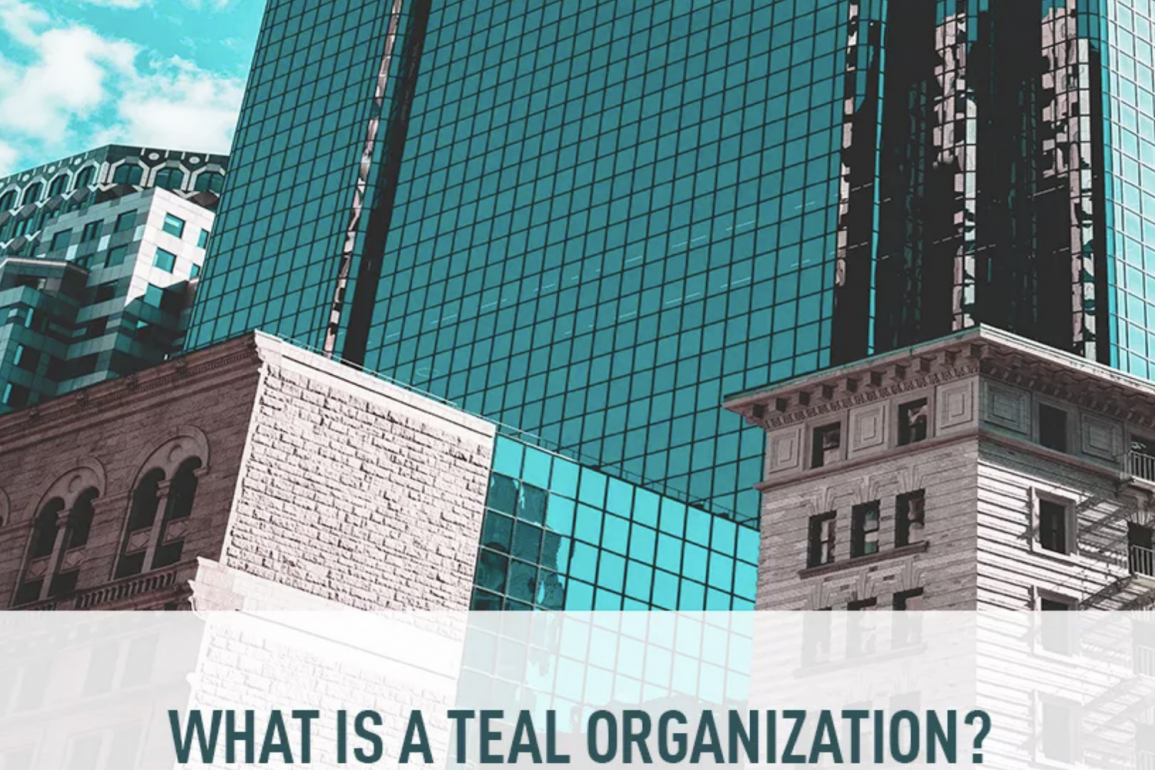Introduction by Enlivening Edge Magazine:
Many of our readers are looking for a simple introduction to “Teal Organizations” to share with their curious friends and this article might serve that purpose admirably.
By originally published by Workology
A few months ago, at the 2018 ATD Austin Applied Learning Summit, a panelist, Dr. Ryan Schoenbeck, asked the audience whether anyone had heard of Frederic Laloux’s research on Teal organizations. I hadn’t. He went on to make comments that positioned the world of work as so exciting that, by the end of the panel, I wanted to know: What’s a Teal organization?
As it turns out, Teal organizations are the topic of Frederic Laloux’s 2014 book, Reinventing Organizations, which is based on three years of researching the ways in which twelve pioneering organizations operate. Laloux found that the organizations he studied use a set of uncommon management practices and principles.
Characterized by self-management, wholeness, and a deeper sense of purpose, these organizations – which he describes as “Teal” – operate largely without organization charts, management hierarchies, quarterly goals or other traditional management strategies. Instead, they’re characterized by features like self-managed teams, intuitive reasoning and decentralized decision-making. Because these practices are so new, the conversation around what they are and how to implement them is ongoing. As a student of workplace culture and learning, I’m fascinated by the Teal conversation and wanted to better understand what Teal really means.
Teal: The Fifth Stage
Why are these companies called “Teal” and not, say, “Sapphire”? In Reinventing Organizations: An Illustrated Invitation to Join the Conversation on Next-Stage Organizations, Laloux describes humanity as evolving in sudden leaps, or steps. Drawing from the philosopher Ken Wilber’s color-based description of these steps, he describes five initial stages of human consciousness, and posits that organizations have evolved in line with them. They are:
Red (impulsive) – Characterized by establishing and enforcing authority through power. Examples of red organizations: Mafia, street gangs.
Amber (conformist) – Views of what is right are internalized according to a belief common to the group. Self-discipline is exercised to adhere to these views, and shame and guilt are used to enforce them. Examples of amber organizations: Army, Catholic church.
Orange (achievement) – The world is seen as a machine: predictable, and able to be scientifically understood and controlled to achieve a desired outcome. Examples of orange organizations: Wall Street banks, most MBA programs.
Green (pluralistic) – Characterized by a sense of inclusion, and a drive to view and treat all people as equal. A common metaphor used for relationships is that of a family. Examples of green organizations: Southwest Airlines, many nonprofits and NGOs.
Teal (evolutionary) – The world is seen as neither fixed nor machine-like. Instead, it’s viewed as a place where everyone is called by an inner voice to contribute based on their unique potential. Examples of Teal organizations: Patagonia, Holacracy.
Human Relations Breakthroughs at Every Stage
For Laloux, each of the above steps is characterized by breakthroughs in the ways people collaborate in order to get things done.
Red breakthroughs – Division of labor, top-down authority.
Amber breakthroughs – Replicable processes, a stable organization chart.
Orange breakthroughs – Innovation, accountability, meritocracy.
Green breakthroughs – Empowerment, values-driven culture, stakeholder value.
Teal breakthroughs – Self-management, wholeness, evolutionary purpose.
Most of us have probably experienced organizations that operate according to red, amber, orange and green worldviews, The Teal breakthroughs are more radical. Here is a little more about how Laloux describes them:
Self-management – Rigid hierarchical management structures are replaced by distributed authority and collective intelligence, in which natural hierarchies emerge and dissipate depending on situational context.
Wholeness – Individuals “drop the mask,” and bring all of whom they are to work, not just the characteristics deemed to be professional.
Evolutionary purpose – The organization has a purpose of its own. Instead of attempting to predict and control the direction of the organization, members strive to listen and understand where the organization is naturally drawn to go.
For a more comprehensive summary of these characteristics – and Teal organizations in general – Laloux’s 2015 article in Strategy + Business is a great resource: The Future of Management is Teal.
Republished with permission.
Featured Image/graphic link by Workology.




